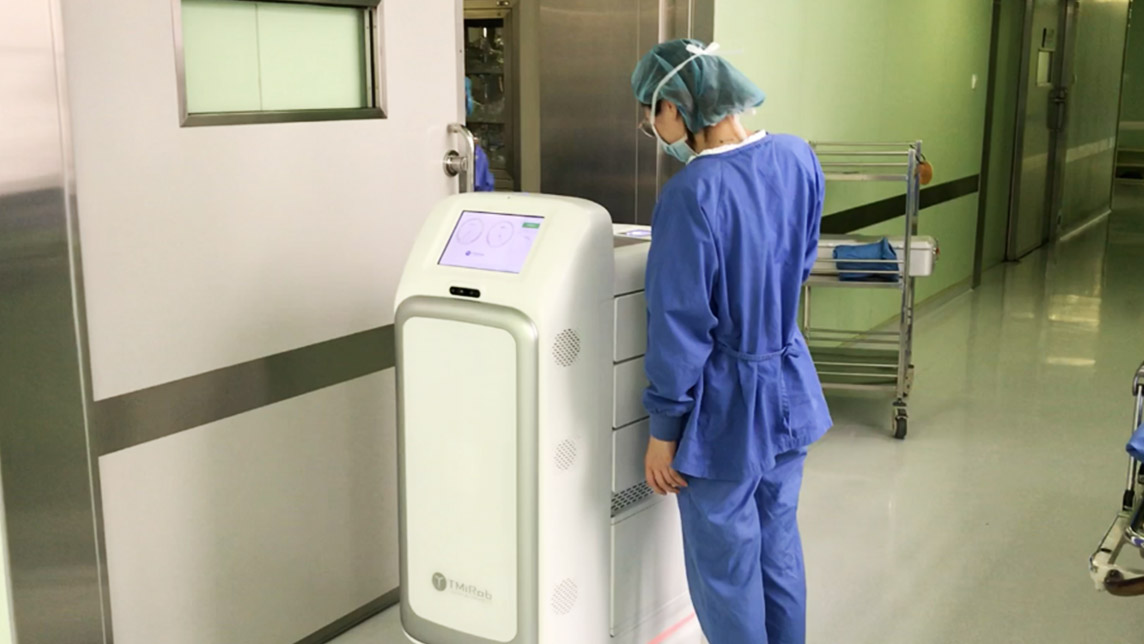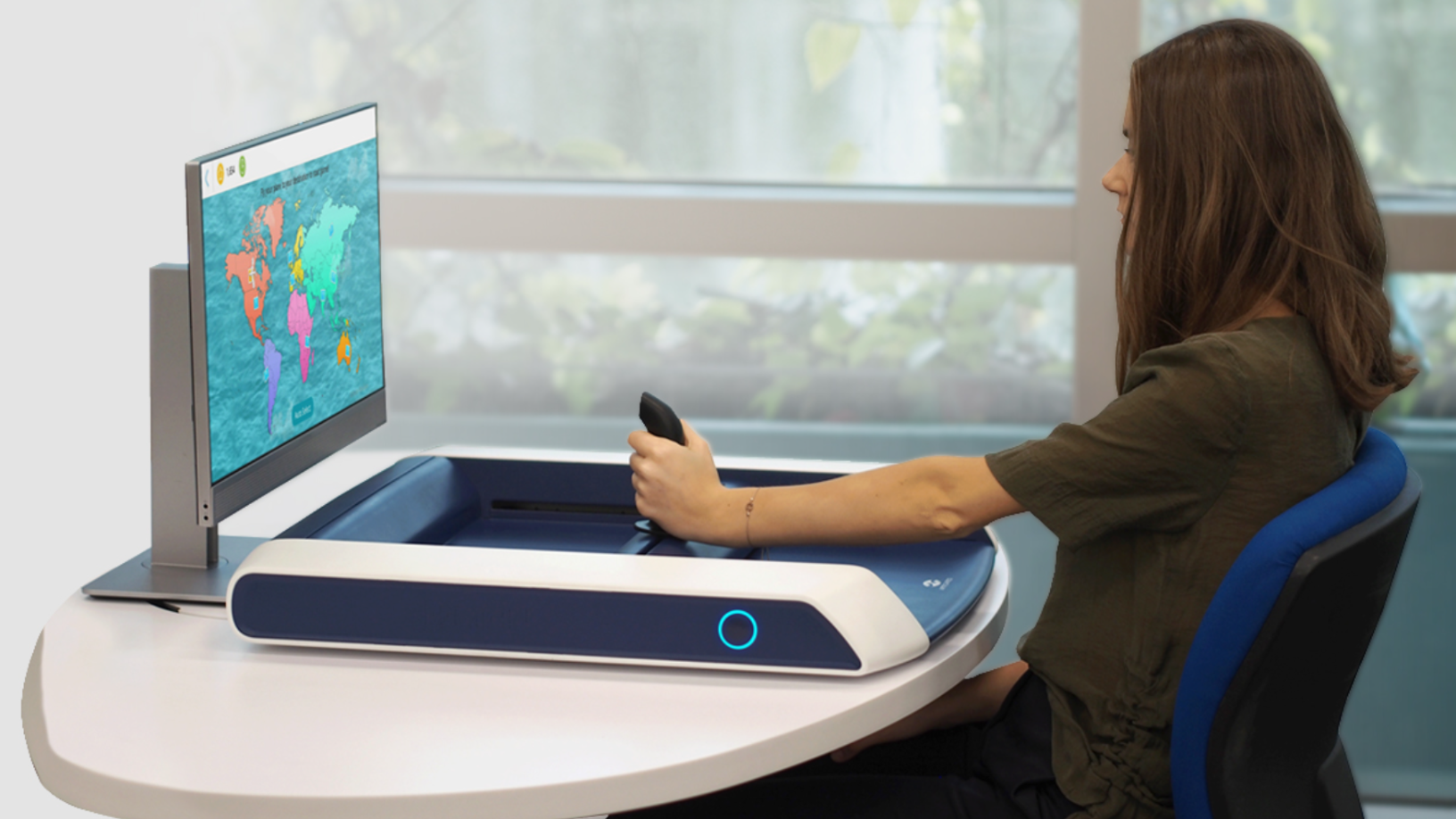Over 100,000 surgeries are performed every year in the 45 operating rooms of Wuhan Union Hospital, one of the top hospitals in China. But surgical conditions are not ideal. For instance, when a surgeon makes a sudden change in his or her plan of attack, one of two assisting nurses may have to leave the OR to retrieve any new instruments the surgeon might require from the hospital warehouse.
Every day each nurse spends 40–60 minutes – or walks 20,000 steps – making these round trips, said Gao Xinglian, the head surgical nurse at Wuhan Union, which means they might not be present in the OR in the event of a medical emergency. In China, nurses spend 10% of their time at work transporting medical supplies.
In September 2016, two TMiRob medical robots were put into trial use at Wuhan Union. It takes a robot 1.75 minutes to make the trip from the hospital warehouse to an operating room, more than three minutes faster than a nurse. One robot can make 140 round trips per day.
“For a nurse, less time on the road means more time for patients,” said Zhang Qiang, Vice-President of Wuhan Union.
Life-saving robots
Founded in Shanghai in 2015, the TMiRob team originally considered using its service robots for multiple clients, including restaurants and museums. Founder and CEO Pan Jing, however, believed the demand potential for robots in Chinese hospitals made healthcare the ideal sector to grow his company.
In April 2016, Pan took his team to working hospitals to learn what the staff needed to better perform their jobs. At Wuhan Union, they discovered that the 7,000 doctors there saw, on average, 13,000 patients at its outpatient clinic each day. A lot of the tasks doctors and nurses performed were repetitive procedural chores that could easily be performed by robots.
The two months of field investigations inspired the team to develop two robot models, one that could carry medical supplies in and out of operating rooms and one that could help look after patients of nuclear medicine wards, thus reducing staff exposure to radiation.
Prior to employing the logistics robots, one of TMiRob’s hospital clients used to spend RMB 17 million on hemostatic polymer, which is used to control bleeding, each year. After deploying the robots, the hospital’s annual expenditure on hemostatic polymer decreased by more than RMB 10 million.
“Unlimited use of medical consumables by doctors is no longer possible because they are only replenished by robots based on the specific needs of a surgery,” said Pan.

Adapting to local needs
TMiRob is hardly the first company to launch delivery robots for medical use. Before the startup was established in 2015, Pittsburgh-based robotics company Aethon had already sold 425 delivery robots to 130 US hospitals. The robots could make a total of 60,000 deliveries per week.
But these robots were designed for American hospitals, which are generally less crowded than their Chinese counterparts. Chinese hospitals that can afford imported robots receive more patients on average. Additionally, their management didn’t take into account how robots move when upgrading hospital buildings.
TMiRob’s delivery robots are made specifically for use in Chinese ORs. “Our robots cater to the needs of Chinese hospitals, which are usually full of patients. Rather than replacing doctors and nurses, we free them from monotonous and repetitive tasks so that they can spend more time with patients,” said Pan.
TMiRob’s medical robots cost only one-third to half the price of European and American robots that perform the same functions. They come in multiple shapes and sizes and have load capacities that range from 40 to 100 kg.
"Surgical robots are next"
According to Pan, TMiRob plans to rent its medical robots to hospitals in the future to make them more accessible.
A February 2019 report by Zion Market Research predicted that the global medical robot market will generate US$24.6 billion by 2025, up from US$6.62 billion in 2018. With India and Japan, China is expected to be one of three main actors in the Asia-Pacific medical robot market.
Li Han, TMiRob’s Deputy General Manager, sketched out the company’s trajectory at a 2018 summit for CEOs in Beijing: “We entered the healthcare market with delivery robots for operating room supplies and cold-chain medicine delivery. Then we deployed our robots in nuclear medicine wards. Surgical robots are next.”
Having successfully closed its Series B+ funding round in March 2019, TMiRob is one step closer to making that dream a reality.













